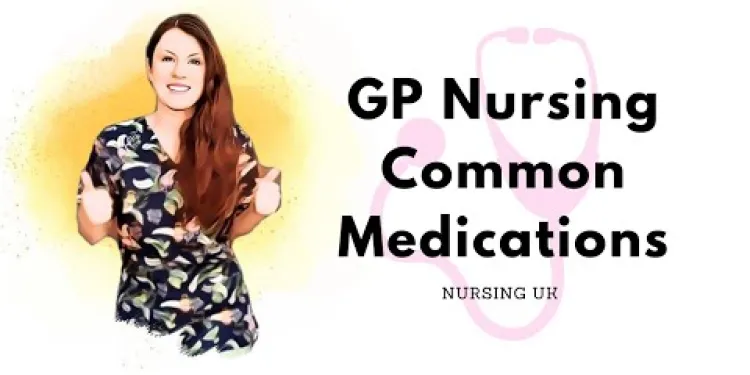
Find Help
More Items From Ergsy search
-

What are some common misconceptions about SEND?
Relevance: 100%
-

What are some common types of SEND?
Relevance: 52%
-

What are SEND children?
Relevance: 49%
-

Who are SEND children?
Relevance: 41%
-

What does SEND stand for?
Relevance: 41%
-

Can I send money to an inmate?
Relevance: 41%
-

How do I send books or magazines?
Relevance: 38%
-

Do SEND children attend mainstream schools?
Relevance: 38%
-

Are there specific laws governing SEND in schools?
Relevance: 38%
-

Who is responsible for assessing SEND needs?
Relevance: 37%
-

Can SEND status change over time?
Relevance: 37%
-

How is progress measured for SEND children?
Relevance: 37%
-

How are parents involved in the SEND process?
Relevance: 37%
-

How do funding and resources affect SEND support?
Relevance: 36%
-

What support is available for SEND children in schools?
Relevance: 36%
-

Why does my email appear to be sending spam?
Relevance: 36%
-

Can SEND children access extracurricular activities?
Relevance: 36%
-

What role do teachers play in supporting SEND children?
Relevance: 35%
-

What items can I send to someone in prison?
Relevance: 35%
-

What support is available outside of school for SEND children?
Relevance: 35%
-

How can schools create an inclusive environment for SEND children?
Relevance: 34%
-

How can I identify if my child has SEND?
Relevance: 26%
-

How can parents advocate for their SEND child?
Relevance: 26%
-

Will my council send a refund check if I overpay?
Relevance: 21%
-

Can inmates send mail?
Relevance: 20%
-

How common is norovirus in the UK?
Relevance: 20%
-

Are boundary disputes common?
Relevance: 20%
-

Is a C-section a common procedure in the UK?
Relevance: 20%
-

GP Nursing Most Common Medications UK.
Relevance: 20%
-

How common is HPV?
Relevance: 20%
-

Are measles outbreaks common in the UK?
Relevance: 19%
-

How common is testicular cancer?
Relevance: 19%
-

How common is sleep apnea?
Relevance: 19%
-

What are the common symptoms of a cold?
Relevance: 19%
-

How to Treat a Common Cold
Relevance: 19%
-

Is it legal to watch live TV without a license if I send it from a non-UK server?
Relevance: 19%
-

What are the common symptoms of appendicitis?
Relevance: 19%
-

What are common symptoms of a concussion?
Relevance: 19%
-

How common is bowel cancer?
Relevance: 19%
-

What are common symptoms of meningitis?
Relevance: 19%
Introduction to SEND
Special Educational Needs and Disabilities (SEND) refer to children and young people who have learning difficulties or disabilities that make it harder for them to learn compared to most others of the same age. While the UK provides a framework for supporting these students, there are still many misconceptions surrounding SEND that can impact understanding and support.
Misconception 1: SEND Only Refers to Learning Disabilities
One common misconception is that SEND only pertains to learning disabilities. However, SEND encompasses a wide range of needs including physical disabilities, sensory impairments, emotional and behavioral difficulties, and developmental disorders like autism. Each child with SEND is unique, and their support needs can vary significantly.
Misconception 2: Children with SEND Cannot Achieve High Academic Success
Another prevalent misconception is that children with SEND cannot excel academically. In reality, with appropriate support and accommodations, many students with SEND achieve excellent academic results. Schools in the UK implement Individual Education Plans (IEPs) and make reasonable adjustments to ensure students with SEND can reach their full potential.
Misconception 3: SEND Is Always Visible
Many people assume that all SEND are visible or immediately recognizable. However, several conditions such as dyslexia, ADHD, or autism may not have outward physical signs. These invisible disabilities can be easily misunderstood or overlooked, leading to a lack of support or inappropriate assumptions about the child's abilities or behavior.
Misconception 4: Mainstream Schools Aren't Equipped to Support SEND
Some people believe that mainstream schools cannot adequately support students with SEND. While specialized schools in the UK cater to specific needs, many mainstream schools now have considerable resources and trained staff to support SEND students. Inclusion policies promote an environment where students of all needs are supported within mainstream education settings.
Misconception 5: SEND Is Rare
There is a misconception that SEND is uncommon, yet according to official statistics, a significant percentage of children in the UK schools have some form of SEND. Awareness and understanding are crucial for developing more inclusive schools and societies. Realizing the prevalence of SEND can lead to better support systems and reduce stigmatization.
Conclusion
Understanding SEND and dispelling common misconceptions are important steps toward creating a more inclusive society that respects and supports children and young people with varied needs. By educating ourselves and acknowledging the diversity within SEND, we can ensure that all children receive the appropriate support to thrive academically and socially.
Introduction to SEND
Special Educational Needs and Disabilities (SEND) means children and young people who find learning harder than others their age. In the UK, there are rules to help these students, but many people still don't understand SEND well. This can make it hard to give the right help.
Misconception 1: SEND Only Refers to Learning Disabilities
Some people think SEND is just about learning disabilities. But SEND covers a lot more, like physical disabilities, problems with senses, feelings, and behavior, and conditions like autism. Every child with SEND is different and needs different support.
Misconception 2: Children with SEND Cannot Achieve High Academic Success
Some people believe children with SEND can't do well in school. This isn't true. With the right help, many SEND students do really well. Schools in the UK make special plans, called Individual Education Plans (IEPs), to help each student do their best.
Misconception 3: SEND Is Always Visible
People often think you can always see SEND. But some conditions like dyslexia, ADHD, or autism don't show on the outside. These hidden disabilities can be missed or misunderstood, which means kids might not get the help they need.
Misconception 4: Mainstream Schools Aren't Equipped to Support SEND
Some people think regular schools can't help SEND students. In the UK, many regular schools have resources and trained staff to help these students. They have rules to make sure all kids can learn together.
Misconception 5: SEND Is Rare
Many believe SEND is not common. But lots of children in UK schools have some form of SEND. Knowing how common SEND is helps everyone be more understanding and can build better support for these children.
Conclusion
Learning about SEND and clearing up these misconceptions helps us make a world where all kids feel included and supported. By understanding SEND better, we can help every child do well in school and in life.
Frequently Asked Questions
What is a common misconception about SEND eligibility?
A common misconception is that only students with visible disabilities qualify for SEND, whereas students with learning difficulties or mental health issues also qualify.
Is SEND only for children with physical disabilities?
No, SEND encompasses a wide range of needs, including learning difficulties, emotional and behavioral issues, and mental health conditions.
Do all students with SEND need an Education, Health and Care Plan (EHCP)?
Not all students with SEND require an EHCP; many can have their needs met through SEN Support within their schools.
Are students with SEND always taught in separate classrooms?
This is a misconception. Many students with SEND are educated in mainstream classrooms with appropriate supports.
Do SEND students always perform worse academically?
Academic performance varies widely among SEND students, and with the right support, many can excel in their studies.
Is SEND support only available in special schools?
SEND support is provided in both mainstream and special schools, tailored to the specific needs of the student.
Do children outgrow their SEND needs as they get older?
While some needs may change over time, many individuals with SEND will require support throughout their lives.
Are parents always responsible for arranging SEND support?
Schools and local authorities have responsibilities to identify and support students with SEND, though parental involvement is important.
Is SEND support costly for schools to implement?
While some resources may require funding, many aspects of SEND support involve adapting teaching methods and utilizing existing staff.
Are behavioral issues always indicative of SEND?
Not necessarily. While some behavioral issues may relate to SEND, there can be a variety of causes that schools must assess.
Is SEND only about educational support?
SEND encompasses educational, social, emotional, and health support to ensure holistic development.
Do children with SEND have lower intelligence?
This is a misconception. SEND covers a range of needs that do not always reflect cognitive ability.
Can students with SEND succeed without any additional support?
Most SEND students benefit significantly from targeted support that addresses their specific needs.
Is seeking SEND support stigmatizing for students?
While stigma can exist, raising awareness and normalizing support helps reduce its impact.
Is SEND synonymous with long-term dependency?
SEND support aims to foster independence and empowerment for students, providing skills for future success.
Are SEND needs the same for every child?
No, SEND is highly individualized, with support tailored to the unique needs of each child.
Is SEND mainly a concern only for teachers and schools?
SEND involves collaboration among teachers, families, healthcare providers, and specialists.
Is there a uniform approach to supporting all SEND students?
Support must be personalized; there is no one-size-fits-all approach to SEND.
Are students with SEND unable to participate in extracurricular activities?
With appropriate accommodations, students with SEND can and should participate fully in extracurricular activities.
Is SEND identification only important in early childhood?
While early intervention is crucial, SEND can be identified and supported at any age.
What do people often get wrong about SEND eligibility?
Some people think that only kids with disabilities you can see can get SEND help. But kids with learning or mental health problems can get help too.
Is SEND only for children with physical disabilities?
No, SEND is for children who need extra help to learn. This can be because of physical disabilities, learning difficulties, or other reasons.
Ways to help might include:
- Using pictures and simple words.
- Using special tools or equipment.
- Talking with teachers and helpers.
Everyone can get help to learn in a way that works for them.
No, SEND covers many different needs. It includes learning problems, feelings and behavior issues, and mental health conditions.
Do all students with SEND need a special plan? (EHCP)
Some students need extra help at school. This is called SEND (Special Educational Needs and Disabilities).
Not all students with SEND need a special plan called an EHCP (Education, Health and Care Plan).
Sometimes, schools can help students without this plan. They can use other ways to support them, like:
- Extra lessons or help during class.
- Using tools like tablets or computers.
- Having a special teacher or helper.
If a student needs a lot of help, they might need an EHCP. The school, parents, and doctors can decide this together.
Not all students with special needs need an EHCP. Many students can get help at school through SEN Support.
Do students with special needs always learn in different rooms?
This is not true. Many students who need extra help go to regular schools with the right support.
Do SEND students always do worse in school?
SEND students have unique learning needs. It doesn't mean they always do worse in school. Some SEND students use tools and get help to learn better. Everyone learns in their own way and at their own speed.
Using helpful tools and techniques can make a big difference. For example, using pictures, speaking out loud, or working with a teacher can help a lot. It's important for schools to give the right support to each student.
Children with special needs learn in different ways. With help, they can do really well in school.
Can children get SEND help at all schools?
Support for children with SEND (Special Educational Needs and Disabilities) is given in both regular schools and special schools. This help is made to fit what each student needs.
Do children stop needing extra help when they grow up?
Some children have SEND. This means they need extra help to learn. As they grow up, some children might still need help, and others might not need as much help anymore.
Every child is different. Some might always need a bit of extra support in school or at home.
Parents and teachers can work together to find the best ways to help. Tools like easy-to-read books, computer programs, and games can make learning fun and easier.
Some people's needs might change as they get older. But many people with SEND will need help all their lives.
Do parents always have to set up SEND help?
Schools and local councils must find and help students with SEND. It is also important for parents to be involved.
Does it cost a lot for schools to help kids with special needs?
Some things that help may need money, but lots of SEND help is about changing how we teach and using teachers we already have.
Do behavior problems always mean a child has special educational needs?
Not always. Some behavior problems might be because of special needs. But there can be other reasons too. Schools need to look at all possibilities.
Is SEND just about help with learning?
SEND helps kids and adults with learning support. It covers school, feelings, making friends, and health to help them grow and learn better.
Do children with SEND have lower intelligence?
SEND means Special Educational Needs and Disabilities. Children with SEND learn in different ways. This does not mean they are less smart. They can be smart in other ways.
Tools that can help children with SEND include:
- Pictures and drawings
- Simple words
- Games and fun activities
This is not true. SEND means Special Educational Needs and Disabilities. It covers different types of help that someone might need. It does not always mean someone has trouble thinking or learning.
Can students with SEND do well without extra help?
Students with SEND (Special Educational Needs and Disabilities) sometimes need extra help to do their best.
Without extra support, it might be harder for them to learn and succeed.
Using tools like laptops, easy-reading books, or working with a special teacher can help.
Talking to a teacher or a helper can make learning easier too.
Many students who need extra help do better when they get special support just for them.
Does getting SEND support make kids feel different?
Some kids need extra help at school. This is called SEND support. SEND means Special Educational Needs and Disabilities.
Getting this help is a good thing. It helps kids learn better.
Sometimes, kids might worry about feeling different. But it’s okay to ask for help when you need it.
Here are some helpful tips:
- Talk to a teacher or a parent about how you feel.
- Remember, everyone needs help sometimes, and that's okay!
- There are tools like audiobooks that can make learning easier.
Asking for help is brave. Remember, you are not alone.
Some people might feel embarrassed or scared to ask for help. But talking about it and making it feel normal can help make that feeling go away.
Does SEND mean needing help for a long time?
SEND support helps children to be more independent and confident. It gives them skills they need to do well in the future.
Do all children with SEND need the same things?
No, every child is different. SEND means Special Educational Needs and Disabilities. Each child may need different help.
Here are some ways to support each child:
- Talk to teachers and helpers at school.
- Use pictures and simple words.
- Check what helps the child learn best.
- Be patient and kind.
No, SEND is different for each child. They get help made just for them and what they need.
Is SEND only important for teachers and schools?
SEND means Special Educational Needs and Disabilities. It is not just important for teachers and schools. Many people care about SEND.
- Parents and families: They want to help their children learn and grow.
- Doctors: They help keep children healthy and support their needs.
- Communities: They can make places better for everyone.
If you want to learn more about SEND, here are some things you can do:
- Ask someone you trust for help, like a teacher or a family member.
- Use easy-to-read books from the library.
- Watch videos for kids about SEND.
SEND is about people working together. This includes teachers, families, doctors, and experts.
Can we help all students with SEND in the same way?
Students with SEND means students with Special Educational Needs and Disabilities.
No, we cannot help every student with SEND in the same way.
Every student is different and may need different kinds of help.
Here are some ways to help:
- Talk to the student and ask them what they need.
- Use simple words and clear pictures.
- Have patience and give extra time for tasks.
- Use tools like visual cards or audio instructions.
- Make sure the classroom is calm and quiet.
Support needs to be just right for each person. There is no one way to help everyone with SEND.
Can students with SEND join in after-school activities?
Students with SEND (Special Educational Needs and Disabilities) can join after-school activities with help. Here are some suggestions:
- Talk to teachers about what activities your child likes.
- Ask if there are any special groups or clubs for students with SEND.
- See if there are tools or helpers to make activities easier.
It's important that every child can have fun and learn new things outside of school time.
With the right help, students with SEND can join in all the fun activities after school.
Is it important to find out about SEND only when children are young?
SEND means Special Educational Needs and Disabilities. Finding out if a child has SEND helps them get the right support.
It is important to know about SEND not only when children are little, but also as they grow up. Children and teenagers can still need help.
Different tools can help. For example, picture cards and simple charts can make learning easier.
If you think a child has SEND, talk to a teacher or a doctor. They can help find the right support.
It is important to get help early, but you can also find and support SEND at any age.
Useful Links
- Ergsy carfully checks the information in the videos we provide here.
- Videos shown by Youtube after a video has completed, have NOT been reviewed by ERGSY.
- To view, click the arrow in centre of video.
- Most of the videos you find here will have subtitles and/or closed captions available.
- You may need to turn these on, and choose your preferred language.
- Go to the video you'd like to watch.
- If closed captions (CC) are available, settings will be visible on the bottom right of the video player.
- To turn on Captions, click settings .
- To turn off Captions, click settings again.
More Items From Ergsy search
-

What are some common misconceptions about SEND?
Relevance: 100%
-

What are some common types of SEND?
Relevance: 52%
-

What are SEND children?
Relevance: 49%
-

Who are SEND children?
Relevance: 41%
-

What does SEND stand for?
Relevance: 41%
-

Can I send money to an inmate?
Relevance: 41%
-

How do I send books or magazines?
Relevance: 38%
-

Do SEND children attend mainstream schools?
Relevance: 38%
-

Are there specific laws governing SEND in schools?
Relevance: 38%
-

Who is responsible for assessing SEND needs?
Relevance: 37%
-

Can SEND status change over time?
Relevance: 37%
-

How is progress measured for SEND children?
Relevance: 37%
-

How are parents involved in the SEND process?
Relevance: 37%
-

How do funding and resources affect SEND support?
Relevance: 36%
-

What support is available for SEND children in schools?
Relevance: 36%
-

Why does my email appear to be sending spam?
Relevance: 36%
-

Can SEND children access extracurricular activities?
Relevance: 36%
-

What role do teachers play in supporting SEND children?
Relevance: 35%
-

What items can I send to someone in prison?
Relevance: 35%
-

What support is available outside of school for SEND children?
Relevance: 35%
-

How can schools create an inclusive environment for SEND children?
Relevance: 34%
-

How can I identify if my child has SEND?
Relevance: 26%
-

How can parents advocate for their SEND child?
Relevance: 26%
-

Will my council send a refund check if I overpay?
Relevance: 21%
-

Can inmates send mail?
Relevance: 20%
-

How common is norovirus in the UK?
Relevance: 20%
-

Are boundary disputes common?
Relevance: 20%
-

Is a C-section a common procedure in the UK?
Relevance: 20%
-

GP Nursing Most Common Medications UK.
Relevance: 20%
-

How common is HPV?
Relevance: 20%
-

Are measles outbreaks common in the UK?
Relevance: 19%
-

How common is testicular cancer?
Relevance: 19%
-

How common is sleep apnea?
Relevance: 19%
-

What are the common symptoms of a cold?
Relevance: 19%
-

How to Treat a Common Cold
Relevance: 19%
-

Is it legal to watch live TV without a license if I send it from a non-UK server?
Relevance: 19%
-

What are the common symptoms of appendicitis?
Relevance: 19%
-

What are common symptoms of a concussion?
Relevance: 19%
-

How common is bowel cancer?
Relevance: 19%
-

What are common symptoms of meningitis?
Relevance: 19%


